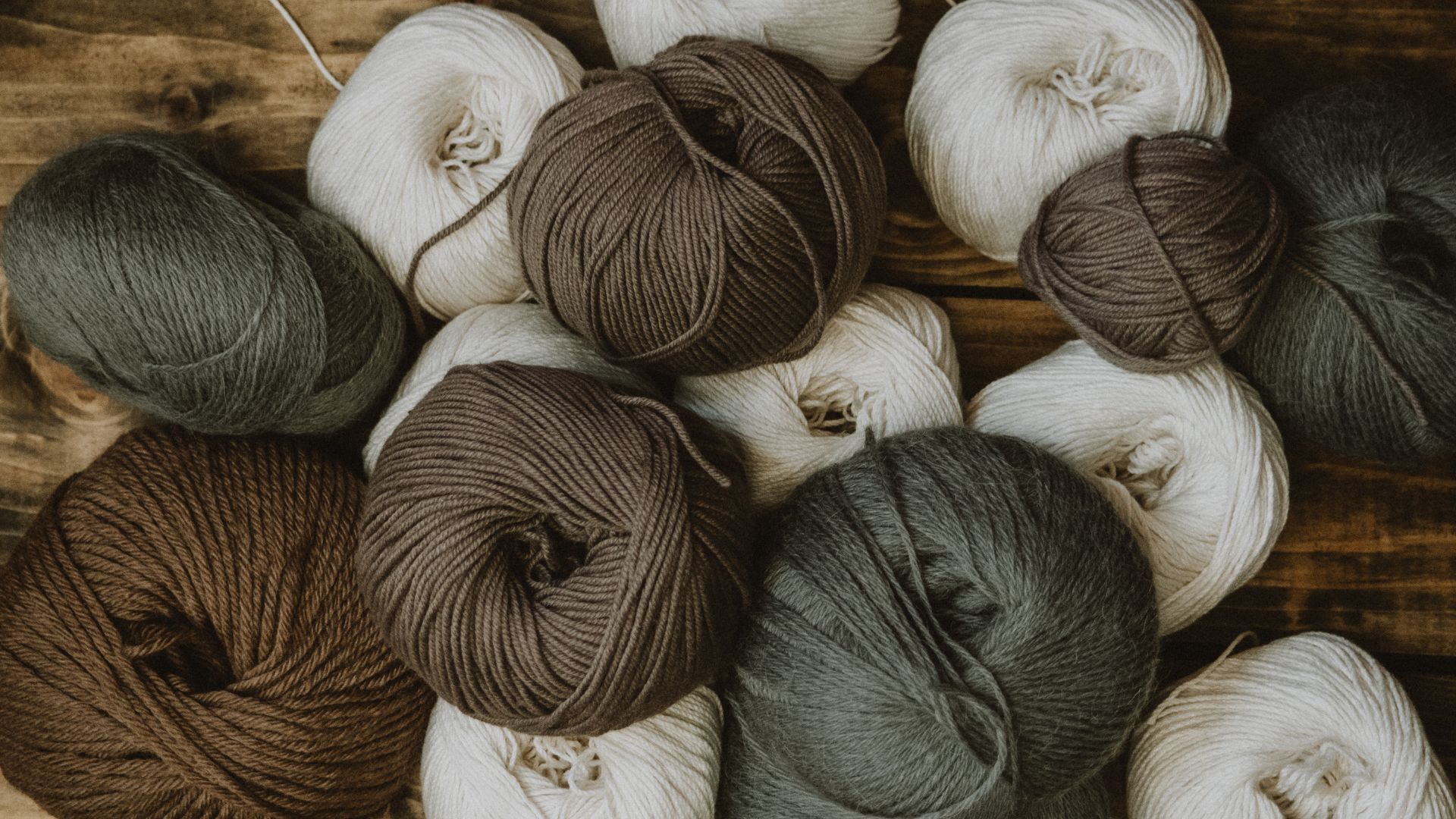Yarn crafts are a joy, but not all yarns are created equal. Some can be a bit challenging to work with, causing frustration in an otherwise delightful project. Don’t worry, though—I’ve got some expert tips to help you navigate those tricky yarns and turn them into stunning creations.
Understanding Yarn Characteristics
Before diving into the tips, let’s briefly understand yarn characteristics:
Fiber Content
Different fibers behave differently. For instance, wool might stretch more than cotton, while silk might be slippery.
Thickness and Texture
Yarn weight and texture impact how it behaves. Chunky yarns may be more forgiving than delicate, fine threads.
Tips for Taming Difficult Yarns
1. Know Your Yarn
Understanding the yarn’s fiber content and weight helps anticipate how it might behave. Check the yarn label for guidance.
2. Tension Matters
Experiment with your tension—sometimes, a looser or tighter grip on the yarn can make a big difference. Adjust your knitting or crocheting tension to suit the yarn.

3. Use Appropriate Tools
For slippery yarns, try wooden or bamboo needles/hooks that provide more grip. Metal tools might be better for yarns that need smooth movement.
4. Try a Different Technique
If your usual method isn’t working, explore different techniques. For instance, if you’re knitting and struggling, maybe try crocheting the same yarn instead.
5. Yarn Preparation
If the yarn is tangling a lot, consider winding it into a ball or cake before starting. This can prevent snags and knots.
6. Mix and Match
Pair a tricky yarn with a more stable one. Combining it with a stronger yarn can add stability and make it easier to work with.
7. Patience and Practice
Don’t get discouraged! Practice makes perfect. Take breaks when needed and return with a fresh perspective.
8. Blocking and Finishing
After completing your project, consider blocking it. Blocking can help even out stitches and improve the overall look, especially with unruly yarns.
So,….
Working with challenging yarns can be a test of patience, but armed with these tips, you’re ready to conquer any yarn-related hurdles that come your way. Experiment, practice, and most importantly, enjoy the creative process!
every knitter or crocheter faces challenges with different yarns. Embrace the learning journey, and soon you’ll master even the most difficult of threads
External Resources:
Handling Specific Yarn Challenges
Let’s delve deeper into managing specific types of challenging yarns:
Mohair Yarn
Mohair can be fuzzy and prone to shedding, making it challenging to work with. Try using a larger needle or hook size to reduce shedding and be patient with the occasional fuzz.
Silk Yarn
Silk is luxurious but slippery. To combat this, wind the yarn into smaller balls, use a yarn holder or bowl to prevent it from unwinding, and maintain a steady tension.
Novelty Yarns
Novelty yarns often have varying textures and thicknesses, causing difficulties in stitch visibility. Opt for simpler stitch patterns to showcase the yarn’s unique qualities.
Super Bulky Yarn
Working with super bulky yarns might strain your hands due to their thickness. Consider using ergonomic tools or taking frequent breaks to prevent hand fatigue.
Hand-Dyed Yarn
Hand-dyed yarns can have color variations, creating challenges in maintaining a consistent look. Alternate between skeins regularly to blend color changes seamlessly.
Each yarn type presents its own set of challenges, but with patience, experimentation, and these specialized tips, you’ll find yourself more equipped to handle any yarn hurdle.
while some yarns may seem daunting at first, they often produce the most breathtaking finished pieces. So, embrace the uniqueness of each yarn and let your creativity flourish.
Advanced Techniques for Tackling Tricky Yarns
Introducing Lifelines
Lifelines are a safety net in knitting. Thread a contrasting yarn through a row of stitches—when mistakes happen, you can unravel to the lifeline, sparing your progress and sanity.
Felting Wool Yarns
Wool can felt if rubbed or exposed to moisture and heat. To avoid this, handle wool yarn delicately and avoid excessive friction or washing in hot water.
Dealing with Bouclé Yarn
Bouclé yarns have loops that can be challenging to work into stitches. Use a larger needle or hook to make it easier to catch the loops.
Split-Prone Yarns
Some yarns tend to split easily. To counter this, slow down your stitching pace and use blunt-tipped needles or hooks to catch the entire yarn strand.
Mending Broken Yarn
If your yarn breaks mid-project, don’t panic! Simply join the broken ends together with a secure knot or use a Russian join technique for a seamless fix.
Adapting Patterns
When working with unconventional yarns, adapt patterns to suit the yarn’s characteristics. Choose stitch patterns that complement the yarn’s texture and behavior.
Final Thoughts
Navigating difficult yarns demands a blend of skill, patience, and adaptability. These advanced techniques empower you to conquer even the most challenging fibers, opening doors to a world of limitless creative possibilities.
Every hurdle is an opportunity to refine your craft and create something truly exceptional. Embrace the journey, experiment fearlessly, and let the yarn whisper its story through your hands.
Remember, there’s no challenge too great for a dedicated crafter like you. Enjoy the process and celebrate your mastery over the art of working with challenging yarns.
External Resources:
Comparison tabular
Here’s a comparison table summarizing the different types of challenging yarns and some tips for working with each:
| Type of Yarn | Characteristics | Tips for Handling |
|---|---|---|
| Mohair Yarn | Fuzzy, prone to shedding. | Use larger needle/hook, be patient with fuzz. |
| Silk Yarn | Luxurious but slippery. | Wind into smaller balls, maintain steady tension. |
| Novelty Yarns | Varied textures, challenges in stitch visibility. | Opt for simpler stitch patterns. |
| Super Bulky Yarn | Thick, can strain hands. | Use ergonomic tools, take frequent breaks. |
| Hand-Dyed Yarn | Color variations, challenging for consistency. | Alternate between skeins regularly. |
| Bouclé Yarn | Contains loops, difficult to work into stitches. | Use larger needle/hook for easier handling. |
| Split-Prone Yarns | Tends to split easily. | Slow down stitching, use blunt-tipped tools. |
| Wool Yarn | Can felt when exposed to moisture and heat. | Handle delicately, avoid excessive friction. |
Each type of yarn comes with its unique challenges, but these targeted tips can help you navigate and overcome the difficulties associated with each one.
Wrapping up
As you embark on your yarn crafting journey, remember that every challenging yarn is an opportunity for growth and creativity. Embrace the uniqueness of each fiber, and let its characteristics guide your hands to create something truly remarkable.
Patience, practice, and a sprinkle of experimentation are your allies when facing tricky yarns. Don’t shy away from the challenge embrace it! You’ll find that with each hurdle overcome, your skills grow, and your finished creations shine even brighter.
So, arm yourself with these tips, approach your projects with confidence, and revel in the joy of crafting. Let the yarn whisper its story through your fingers, weaving tales of beauty and craftsmanship.

For over a decade, I’ve been Mike, an artist, crafter, and designer deeply immersed in the Croc world. I thrive on crafting unique, size-inclusive patterns, fostering creativity, and sharing them on ktforum.com. My designs aim to ignite your creative spark and delight you, ensuring clarity and ease of use through rigorous testing. Join me in expressing your creative flair and showcasing your craft with joy.
Related Posts
- Say Goodbye to Yarn Knots: Tips for Smooth Crocheting
Crocheting is a delightful craft that lets you weave magic with yarn, but pesky knots…
- Choosing the Perfect Yarn for Your Project
Selecting the ideal yarn for your knitting or crocheting project can be as exciting as…
- Quilting Without a Quilting Hoop: Tips and Techniques
Quilting is a beautiful craft that allows you to create stunning and cozy pieces. While…
- What to Do If You Run Out of Yarn in the Middle of a Project
Running out of yarn in the middle of a project can be a crafter's nightmare.…

